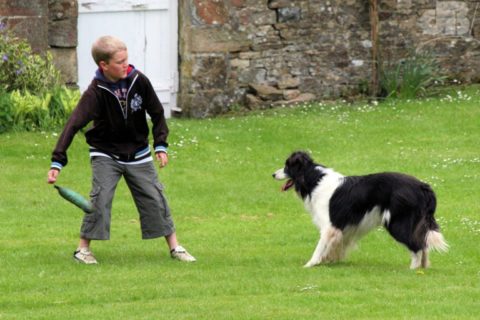A lot of people, usually people who don’t have dogs, talk about dog psychology and how dogs see humans, specifically their owners and handlers as being like the alphas in the dog’s pack and that’s why they (usually) do what we command them to do and always come to us for food, tummy rubs, and treats.

The simplest of observations shows that this is not true. Most dogs on seeing a human walking towards them will, if they’re well adjusted (dog and human) may approach with caution and interact. But, if it’s a strange dog, the response is almost always entirely different. Now, the scientific evidence is in, in the form of functional magnetic resonance imaging (fMRI). Brain scans of awake dogs presented with human and canine faces show adjacent but separate regions of the brain being activated in response.
The researchers explain how working dogs were presented with pictures of canine and human faces. The human faces varied in familiarity (familiar trainers and unfamiliar individuals) and emotion (negative, neutral, and positive). Dog faces were familiar (kennel mates) or unfamiliar.
They found that the human face area activated in the dogs’ brains maps to the part of our brains we call the fusiform area and the dog face area maps to the human superior temporal gyrus. Both regions are critical for human face processing system in our brains, suggesting a past evolutionary link to our common mammalian ancestor and perhaps deeper back in time to the precursors of mammals.
The research paper can be found here.